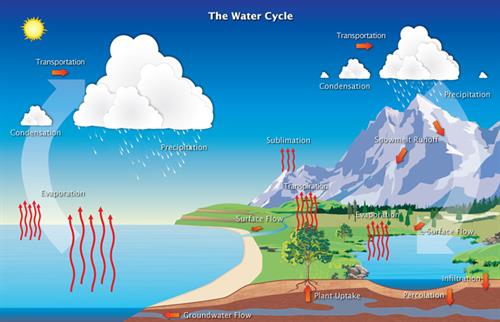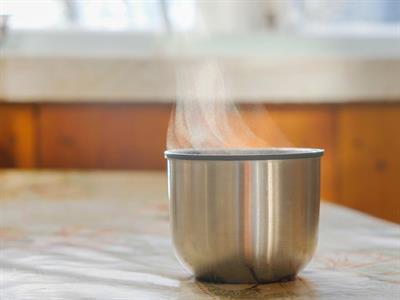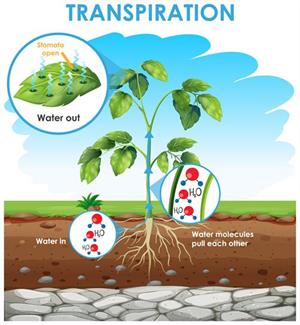PDF chapter test TRY NOW
The water cycle is also called a hydrological cycle. The cycle involves the continuous movement of water from the earth to the atmosphere. In the hydrological cycle, water moves from one reservoir to another. The movement of water is through different processes such as:
1. Evaporation
2. Sublimation
3. Transpiration
4. Condensation
5. Precipitation
6. Surface runoff
7. Infiltration.
The water converts itself to various forms like liquid, solid and vapour.

Water cycle
Evaporation:
Evaporation is a type of vapourisation where a liquid is converted to a gaseous state (vapour) before it reaches the boiling point.

Evaporation
Water from the earth's surface or water bodies like oceans, seas, lakes, ponds, and rivers evaporates and becomes water vapour in the water cycle.
The evaporation process is driven by the heat of the sun. The main factor that affects evaporation includes humidity, wind speed, temperature and solar radiation.
Sublimation:
The direct conversion of water from solid to vapour or gas without passing through the liquid phase is called sublimation.

Sublimation
Example:
Ice caps from the north and south poles, ice caps present on mountains are examples where the solid form of water is converted into water vapour directly, without conversion into liquid.
Transpiration:
Plant release water vapour into the atmosphere through stomata present in leaves and stems is called transpiration.

Transpiration
Stomata is present on the lower surface of leaves as well as in stems. Stomata in stems constitute a lesser percentage than in the leaf. The opening of stomata is influenced by light and thus associated with the evaporation process and the sun.

Schematic representation of water vapour H_2O escaping from leaves
Evapotranspiration (also called total evaporation) is the combined sum of transpiration through plants and evaporation. It is used to evaluate the movement of water in the atmosphere.

Evapotranspiration
Reference:
https://www.flickr.com/photos/atmospheric-infrared-sounder/8265072146
https://commons.wikimedia.org/wiki/File:Dry_Ice_Sublimation_1.jpg
https://commons.wikimedia.org/wiki/File:Surface_water_cycle.svg
https://www.freepik.com/free-vector/diagram-showing-transpiration-plant_6078279.htm#page=1&query=plant%20transpiration&position=1
